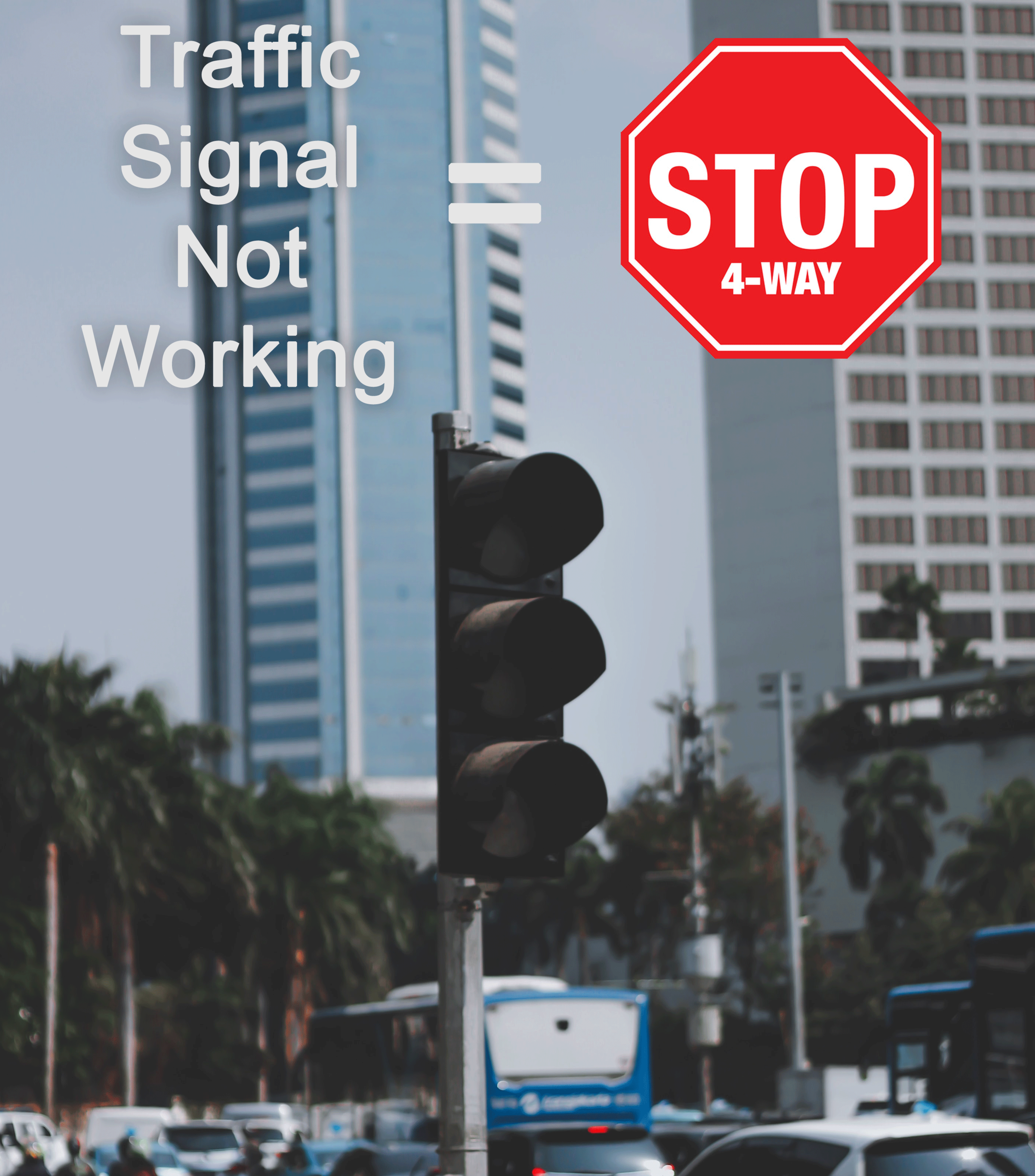If signals are not functioning, proceed with caution as if it's a 4-way stop
If the traffic signal is totally dark, all drivers are to stop at the intersection, then proceed as if the intersection had stop signs controlling all approaches, unless:
Law enforcement or other authorized persons are directing traffic, or
There are portable stop signs located on select approaches.
Follow these 4 rules to a 4-way stop to keep traffic flowing smoothly and safely.
1. First come, first served.
This applies to the road too. If there is no traffic light but rather a 4-way stop, the first car to arrive at the intersection receives the right of way. It doesn’t matter where the vehicle is located or what direction it is traveling, this rule will always apply when someone has clearly arrived at the stop sign first. However, still, be wary of aggressive or distracted drivers that may dismiss this rule.
2. Yield to the right.
When two vehicles arrive at a 4-way stop at the same time and are located side-by-side, the vehicle furthest to the right has the right of way. If three vehicles arrive at the same time, the car furthest left should continue to yield until both of the other cars to the right of them have passed.
3. Straight vs turning.
When arriving at an intersection head-to-head with another vehicle, it is important to use signals. When two vehicles arrive at a 4-way stop at the same time, and they are located head-to-head and one of the vehicles intends to turn and the other intends to go straight, the vehicle going straight has right of way. Keep in mind that if both vehicles are going straight or turning in the same direction, they can both proceed at the same time as they will not cross each other’s path.
4. Right over left.
When two vehicles arrive at a 4-way stop at the same time, and they are located head-to-head and one of the vehicles intends to turn right and the other intends to turn left, the vehicle turning right has right of way. Move forward slowly before entering the intersection to indicate to other drivers you are making the turn. The driver turning left should wait until the other car has fully passed.
You may be wondering what happens if all four cars arrive at the intersection at the same time? There is no good rule of thumb as to who should go first. However, it is recommended that you wait for the most aggressive driver to make the first move and then proceed with caution using the rules above from there. Overall, it’s important to be patient and alert when approaching a 4-way stop.
Flashing yellows exist at many busy intersections, and during construction or after a power outage, a traffic light might not be functioning correctly. As a safety measure, the intersection runs a default program. A flashing yellow means you should proceed with caution, knowing cross-traffic may be entering. The busier of the two intersection streets gets a yellow flashing light, while the less busy intersection gets a flashing red light. The flashing red light means: Come to a complete stop as if you’ve stopped at a stop sign and proceed only when clear. The flashing yellow light means: "proceed with caution." Traffic facing the yellow light has the right-of-way, but oncoming traffic usually also has a flashing yellow light, and cross-traffic will have a flashing red light.





